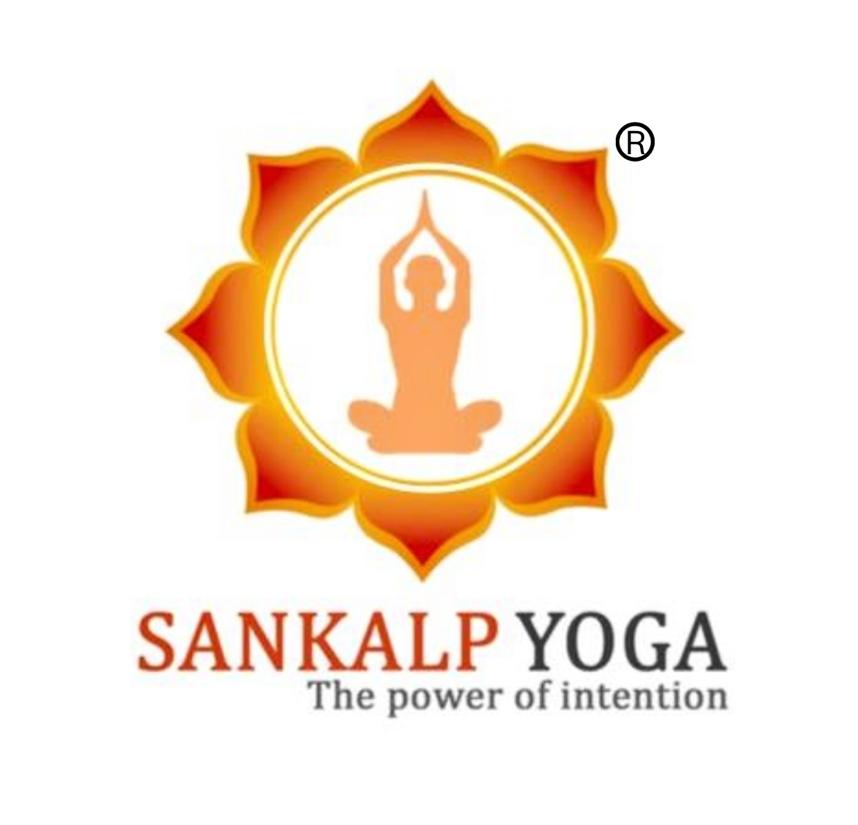Yoga therapy Teacher training – 200 Hours
Learn how to improve and restore physical & mental well-being.
Our Yoga Therapy TTC is following Bihar school of Yoga, Krishnamacharya tradition & Iyengar Yoga.
An implementation of the ayurvedic approach is included.
Become a Professional Yoga Therapist
Our intensive Yoga Therapy Teacher Training certification is covering:
- the basics of yoga therapy
- treatment methodology
- anatomy & physiology
- naturopathy
- ayurvedic approach
Graduates are able to develop client specific therapy programs suiting to an individual’s needs and limitations. Students are trained to teach a yoga therapy classes directed at treating different ailments,
The course is suitable for yoga practitioners of all levels, as well as medical, or other fitness/ sports professionals who are looking for a solid foundation in Yoga therapy and its applications. Students will be eligible to be certified by IAYT.
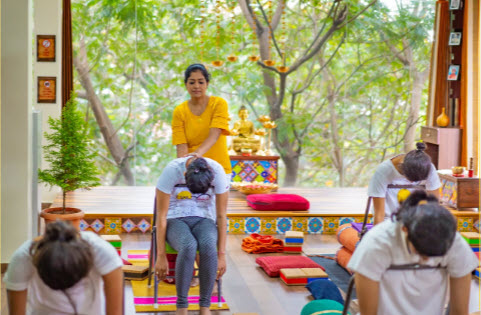
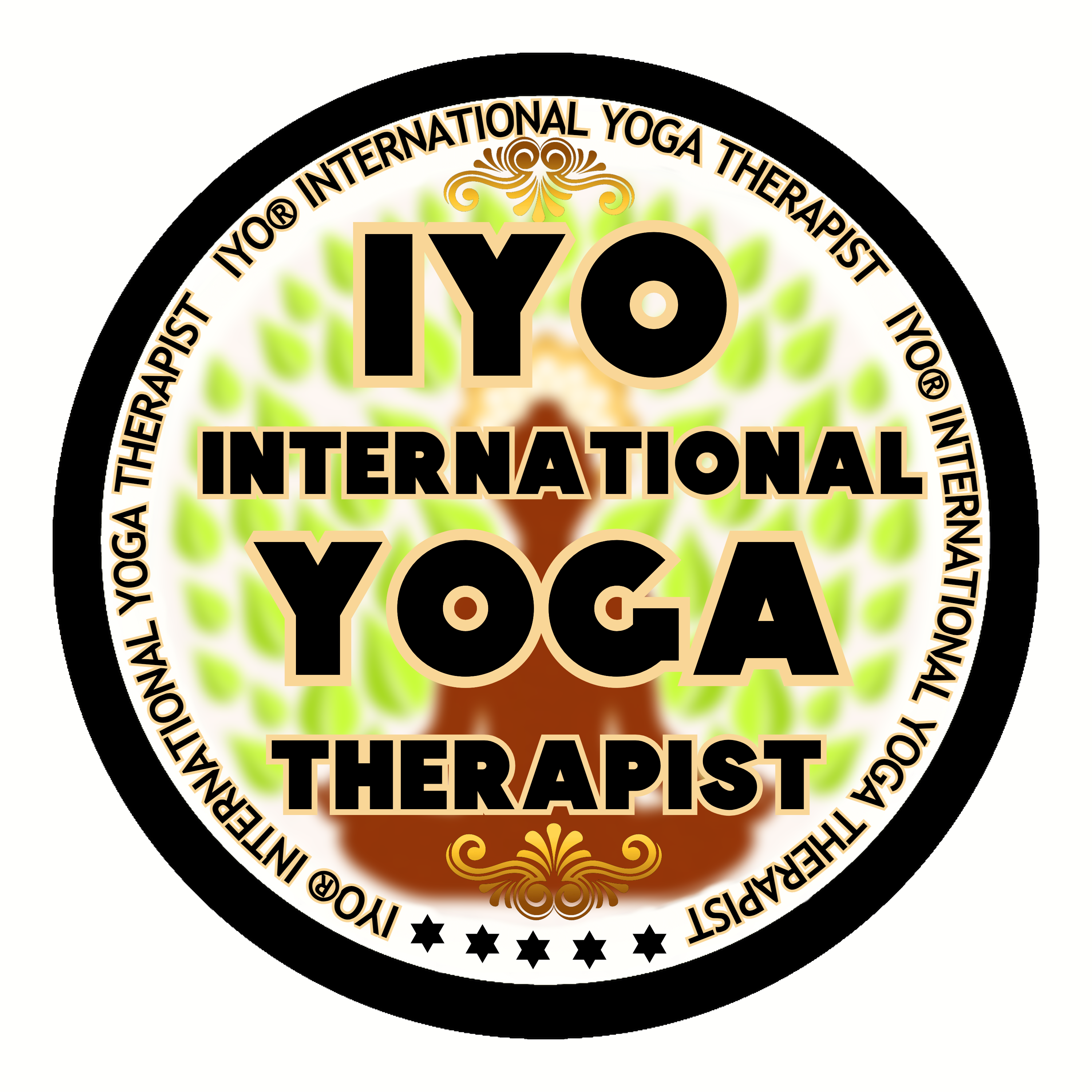
SYLLABUS OF YOGA THERAPY TEACHER TRAINING – 200 HRS
1) STUDY OF HEALTH AND DISEASE ACCORDING TO AYURVEDA:
- What is Ayurveda? (History, Background, Science vs Ayurveda).
- Understanding the concept of health and disease according to Ayurveda (five element theory and its effects on the body/mind system).
- The three doshas, body constitutions or humors known as Vata, Pitta and Kapha, their effects on the body/mind system and how to maintain their balance.
- The effect of the doshas in the body according to season, day time and age.
- Diseases related to Vata Dosha (80 diseases)
- Diseases related to Pitta Dosha (40 diseases)
- Diseases related to Kapha Dosha (20 diseases)
- Knowing your dosha (Self-assesment)
- Diet and Daily Regimen for each dosha.
- Understanding disease according to IAYT concept
2) STUDY OF ASANAS
As asanas from different backgrounds are complementary to each other, the program is designed to create an over all approach of yogic management for the most common diseases which affect mankind today.
Study of asanas begins with the Pawanamuktasana Series or wind releasing series, which helps release blockages on different parts of the body. It also helps connect the practitioner with the current state of mind through gentle controlled breathing and movement, known as vinyasa krama:
A. Pawanamuktasana Series
i) Anti-rheumatic Group
ii) Digestive/Abdominal Group
iii) Energy Blocks Releasing Group
iv) Application of these series for common diseases
Once the practitioner is able to understand the essence of yoga asanas, we move into the fundamental practices of postures, by creating an in-depth understanding of Iyengar Yoga Asanas with the use of Props such as belts, blocks, chairs, bolsters whenever necessary.
B. Restorative Yoga Series
i) 90 Essential Asanas for sequencing according to a disease:
- How to come in and out of the posture
- Common Mistakes
- Adjustments/Assisting into the posture
- Benefits of the practice
- Modifications according to Disease
- Contraindications
ii) Sequences for particular diseases based on Restorative Yoga:
- Cardiovascular System
- Immune System
- Nervous System
- Digestive System
- Respiratory System
- Urogenital systems.
C. Cleansing Sequences or Purification Methods:
used according to the patient’s state of health one or several methods can be used in a selective basis to help achieve a state of health.
i) Laghoo Shankaprakshalana (Intestinal Wash)
ii) Jala Neti (Cleansing of the Nostril Passages)
iii) Trataka (Cleansing of the Eyes)
iv) Kapalabhati (Cleansing of the Mind)
3) ASANA METHODOLOGY
A. Asana Practice, Vinyasa Krama and its Core Principles
B. Learning to Sequence according to a particular disease.
C. Learning How to Draw Postures.
D. The Science of Asanas and their Therapeutic effects
- Standing Postures
- Balancing
- Forward Bending Postures Meditation Postures
- Back Bending Postures
- Twisting Postures
- Inverted Postures
- Relaxation Postures
E. Outline of health assessment for patients/students.
F. Teaching Practicum
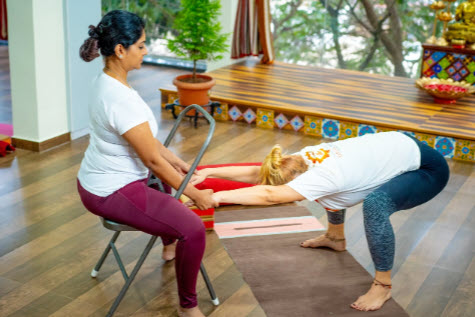
4) Mysore style of Yoga
Teaching how to use Krishnamacharya Yoga Mandiram techniques to build Mysore Style of Yoga Practice which enables the growth of the teacher as well as the student.
5) Relaxation Techniques
Modern and fast-paced lifestyle as well as connection to external stimuli (such as digital devices) has created an inability to relax and let go. This in turn may express itself as fear, anxiety, inability to make decisions, depression, loneliness, etc.
Through several relaxation techniques we invite the future yoga therapist to help reconnect his/her students with the “here and now”.
A. Quick Relaxation Technique
A guided 10 to 15 minutes practice which helps release emotional and mental tensions. The student learns how to guide this and is free to apply it on his/her teaching practicum.
B. Yoga Nidra
Origins and applications of yoga nidra. The student is asked to create its own yoga nidra script as well as learning to create a relaxing voice to guide this practice.
C. Chakra Breathing and Chakra Sounds Techniques
D. Tibetan Bowl Healing and Relaxation Techniques
Practice to connect with the deep sound of the Tibetan bowls and learn how to meditate on “nada”, the inner sound. Learning to use singing bowls as part of your teaching skills is an important part of a classroom setting as it helps tap on the ability of self-healing innate on each human being.
E. Using of tunning forks
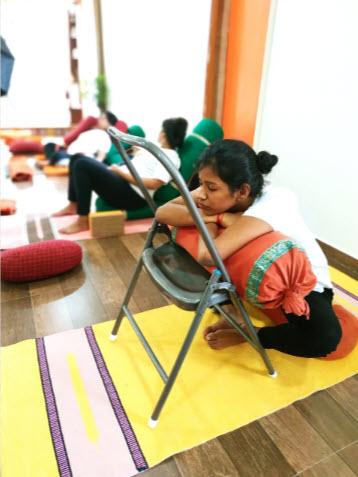
6) Pranayama (breathing exercises) & Bandhas
Understanding the connection of the body/mind system with the pranic or vital body. Introduction to the essence of prana (life energy) and its applications towards helping reduce the impact of a disease.
- How do we breath?
- The 4 essential aspects of Pranayama
- How to introduce the practitioner to his/her natural breath
- Abdominal, Thoracic & Clavicular Breathing
- Full Yogic Breath, Ujjayi Breath
- Nadi Shodhana, Brammhari, Bhastrika, Kapalabhati, Sheetali & Sheetkari
- Moola, Uddhyana, Jalandhara & Maha Bandha.
Students will be asked to put these aspects of pranayama into practice by learning how to guide several breathing practices.
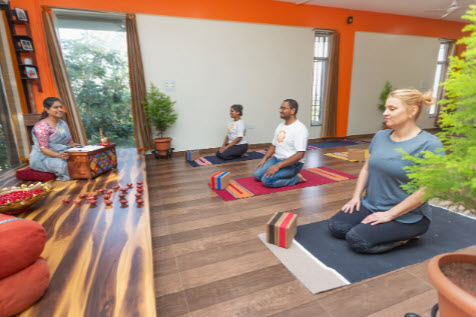
7) Mudras (Yoga in your hands)
- What are Mudras
- Preparing the body/mind system for the use of mudras.
- Connection of Mudras and Ayurveda
- Connection of Mudras and the Chakras
- Guiding mudras on an individual or group basis.
- Using mudras to help heal physical problems such as lower back pain, arthritis, digestive disorders, high blood pressure, respiratory disorders, etc.
- Using mudras to help heal emotional problems such as anxiety, depression, sense of self-worth, lack of focus, etc.
- Essential Mudras of Yoga for Meditation Practices (Chin Mudra, Jnana Mudra, Shambavi Mudra, Nasikagra Mudra, Prana Mudra, Shanmukhi Mudra, Kechari & Kaki Mudra)
- Mudras to balance the doshas of the body
10) Yoga Philosophy (Patanjali’s Yoga Sutras)
- Foundations of Yoga
- Concept of Abhyasa and Vairagyam
- Ashtanga Yoga – the 8 limbs of Yoga (Yamas, Niyamas, Asana, Pranayama, Pratyahara, Dharana, Dhyana, Samadhi)
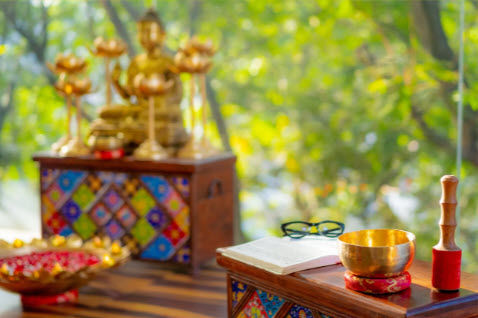
11) Yoga Anatomy
The program does not contain any elements of functional anatomy or structural yoga therapy. The course includes the ayurvedic approach to health and disease and sees the body as a unity.
Introduction to the following anatomic systems and their relationship to ayurvedic diseases:
- Cardiovascular System
- Respiratory System
- Digestive System
- Skeletal System
- Muscular System
- Endocrine System
12) AYURVEDA DINACHARRI
How incorporate Ayurveda into daily life.
13) Case Study
Throughout the training, the student should work on a case study. Particularly someone who they know such as family member, friend or co-worker who has a particular disease or group of diseases. The student will be asked to research on this disease, to apply apply what has been learned during the course in order to deliver an essential Therapeutic Yoga Program.
14) Final Teaching Practicum
As final teaching practicum, the student should be able to deliver a led class of 2 hours of his/her authority, based on the chosen case study. The led class will encompass all the elements seen during the training such as:
- Allopathic as well as Ayurvedic nature of the case study.
- Approach through yoga and ayurvedic practices.
- Sequencing for a particular disease or group of diseases.
- Flow of the practice and its limitations.
- Appropriate use of Vinyasa Krama.
- Contraindications for the given practices.
- Ability to maintain the led class within the designated time .
- Floor Management.
- Body Language, Clarity of Voice.
- Ability to be there for the student.
